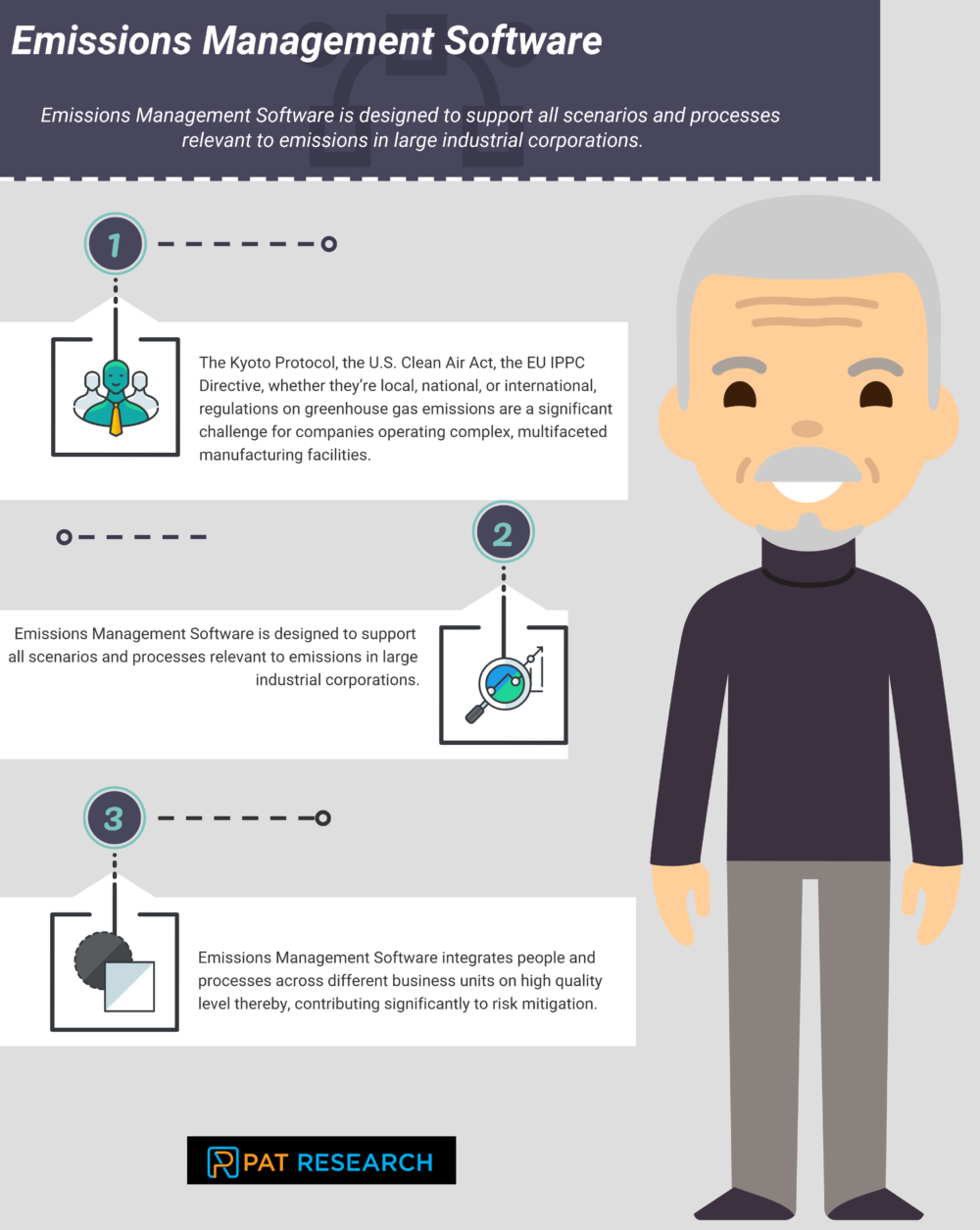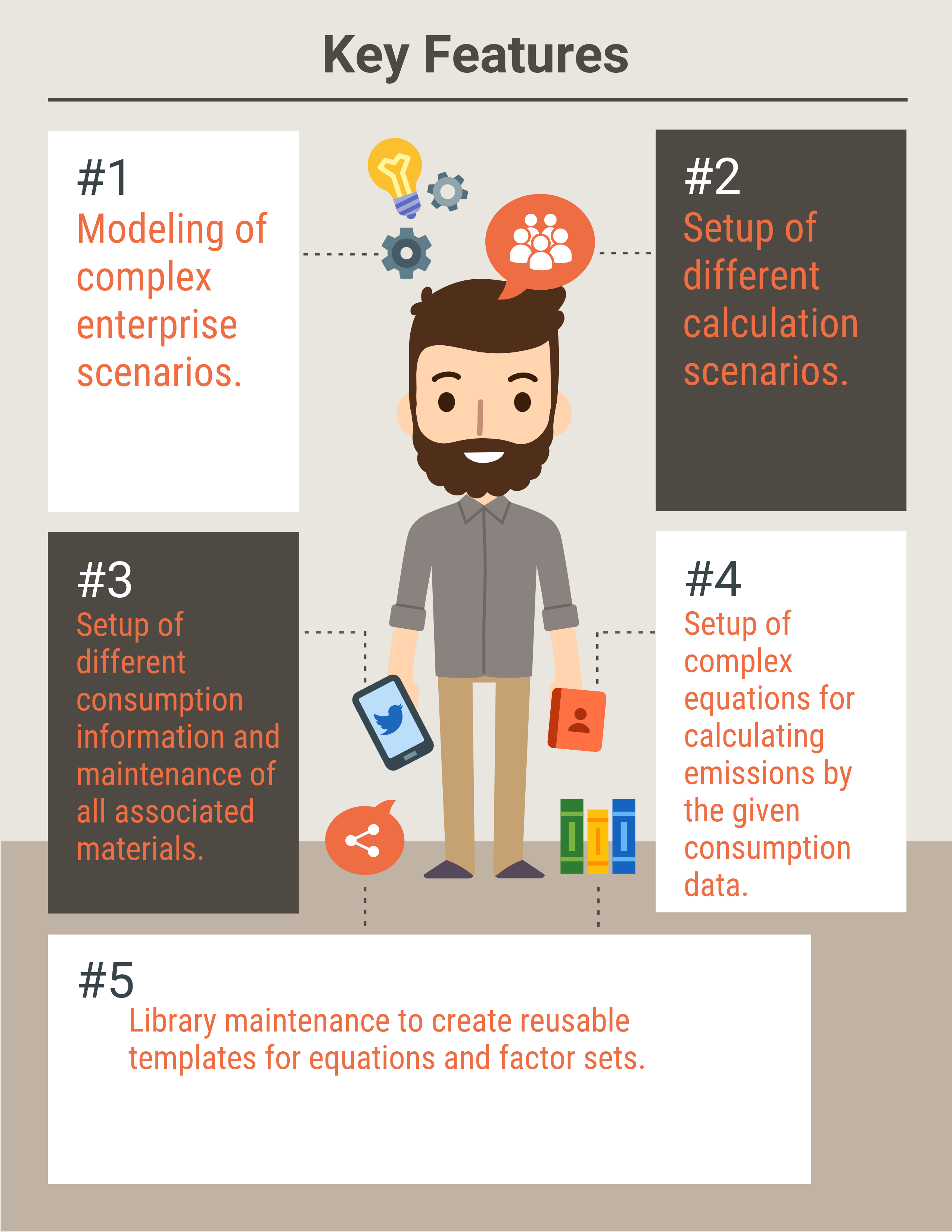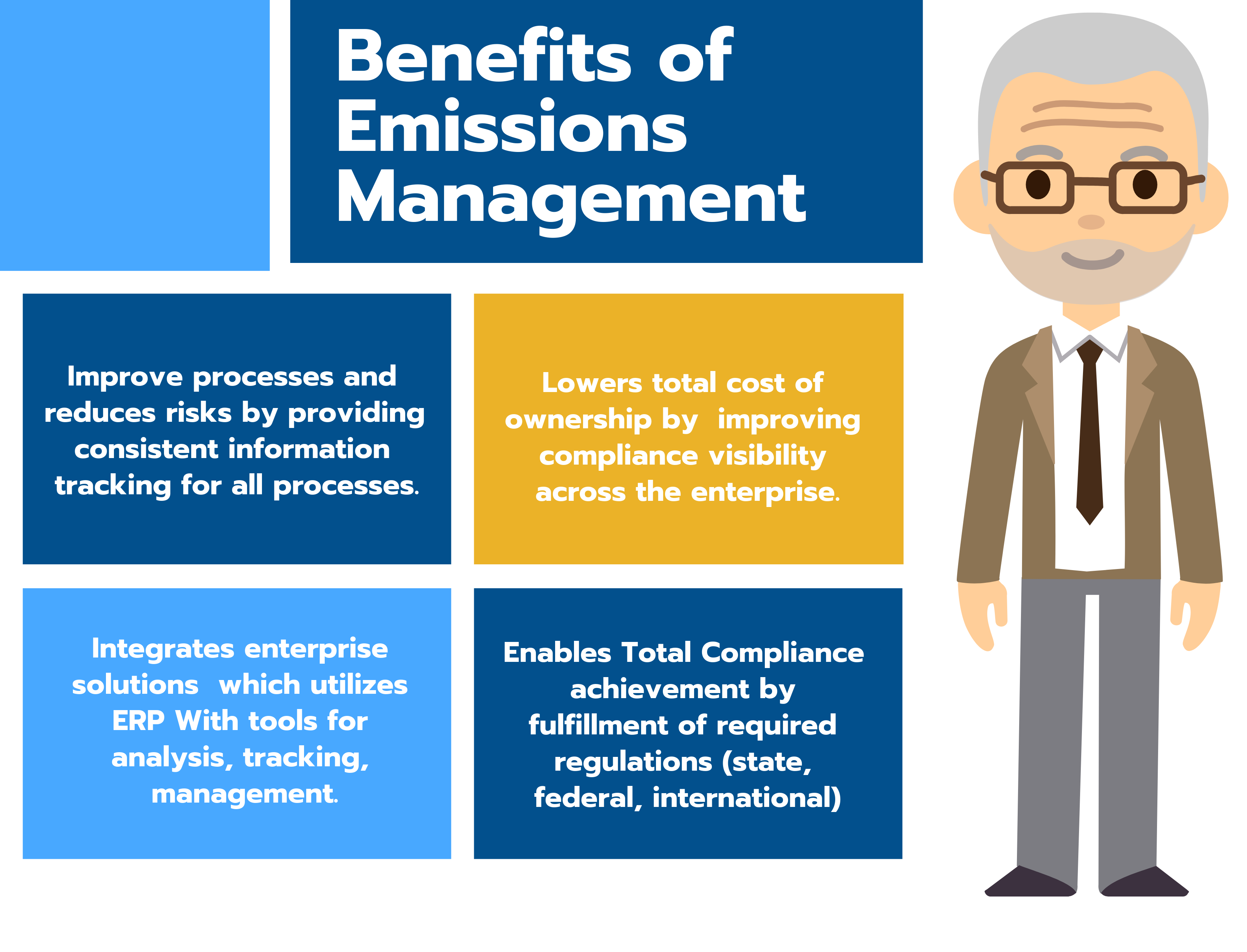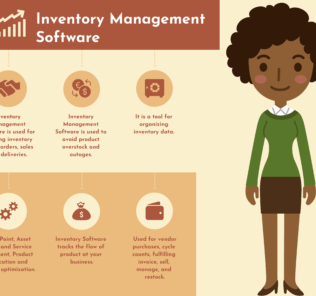What is Emissions Management Software?, Key Capabilities, Benefits

The Kyoto Protocol, the U.S. Clean Air Act, the EU IPPC Directive, whether they’re local, national, or international, regulations on greenhouse gas emissions are a significant challenge for companies operating complex, multifaceted manufacturing facilities.
Clearly, the companies that can most efficiently manage, measure, and document emissions output will most easily achieve compliance, reduce their exposure to risk, and maintain a competitive advantage. At the same time, incentives built into emissions regulations present new opportunities for significant revenue generation.
By participating in emissions trading, companies that meet prescribed targets receive credits. They can then trade these credits like stocks to companies that haven’t met their targets. The potential revenue that can be generated through such trading is well into the hundreds of millions of dollars, and companies that do it well stand to gain substantially.
What is Emissions Management Software?
Emissions Management Software is designed to support all scenarios and processes relevant to emissions in large industrial corporations. This comprises the provision of functionality required on operational level (for single plants or facilities) as well as for corporate demands, such as environmental reporting or KPI monitoring.
Emissions Management Software integrates people and processes across different business units on high quality level thereby, contributing significantly to risk mitigation.
The Emissions Management Software core functions are to maintain compliance with legal permits and regulations which impose serious operational boundaries and even financial threats for industrial and non-industrial operation sites.
The capability of the solution to define emissions forecast scenarios makes Emissions Management Software an instrument for all planning and strategic decision items both, on operational and on corporate level.
Emissions Management Software supports the maintenance of facilities based on plant and process model, the creation of regulatory based documents and the collection of any measurement based data needed to track emissions.
Emissions Management Software provides the following key features:
- Modeling of complex enterprise scenarios. That includes the modeling of all facilities and its activities that cause emissions. The modeler is also used for grouping and categorization tasks.
- Setup of different calculation scenarios.
- Setup of different consumption information and maintenance of all associated materials.
- Setup of complex equations for calculating emissions by the given consumption data.
- Library maintenance to create reusable templates for equations and factor sets.

Emissions Management Software provides the following key features
What are the Key Capabilities of Emissions Management Software?
To comply with environmental regulations, emissions management is a must. Emissions Management helps you get the job done with tools for controlling, measuring, and documenting emissions output. Emissions Management helps reduce the risk of costly fines and improves productivity by aligning compliance processes with existing workflow. It also supports new revenue streams by helping you trade emissions credits on the lucrative emissions trading markets.
- Emissions estimation and analysis supported by scenarios, calculations and presentation of emissions data
- Compliance management with task supervision, schedules, defined information flows and procedures and roles
- Compliance reporting via automated report generation and delivery
- Emissions trading and collaborative scenarios, including forecasting and transaction support
What are the features of Emissions Management Software?
- Emissions scenarios and analysis
- Emissions tasks and compliance
- Emissions reporting and documentation
- Emissions trading and collaborative scenarios
1. Emissions scenarios and analysis
Emissions regulations invariably require detailed descriptions of the facilities and processes that emit gasses into the environment. Depending on the type of emissions regulated and the
legal requirements entailed, these descriptions can differ dramatically. With flexible capabilities for modeling plant facilities, building scenarios, and analyzing processes, Emissions Management Software helps you generate descriptions at varying levels of detail. You can:
- Build structured representations of facilities and processes
- Generate records that detail emission type, source, amount, and environmental effects
- Automatically estimate complex emissions data
- Define and apply forecast scenarios
- Establish performance goals based on environmental key performance indicators (KPIs)
- Document all communications for shareholders, investors, and the public as required by various regulations
2.Emissions tasks and compliance
Emissions Management Software provides extensive support for determining, measuring, monitoring, and controlling emissions at manufacturing sites. Together, these features and functions provide sophisticated compliance management capabilities that enable your
company to exercise its risk management responsibilities to the fullest extent. Emissions Management Software allows you to:
- Track, analyze, and record emissions measurement data
- Control interactive processes
- Exercise risk management responsibilities
- Evaluate existing emissions data and generate forecast scenarios to assess the effects of operational modifications
- Calibrate and maintain measurement equipment
- Manage workflow and role-based tasks
- Build triggers that automatically generate alerts when emissions values exceed plant limitations
- Measure the impact of excess emissions and determine corrective action
- Employ sophisticated scenarios and tools for indirectly measured emissions (such as greenhouse gas emissions, which are estimated using electricity consumption data)
3.Emissions reporting and documentation
The only practical way to demonstrate regulatory compliance is by meticulous reporting and documentation. Typically, reports must include data about emissions-related processes and a summary of measurement results over a specific period of time. With robust data warehousing capabilities, Emissions Management gives you the power to gather and integrate the required data.
- Analyze and present data and scenarios
- Automatically generate and distribute data and reports on demand
- Manage role-based employee access to plant and process specific permits, as well as current laws and regulations in effect for a manufacturing facility
- Maintain up-to-date information regarding all authorities involved, such as addresses and contact persons.
4.Emissions trading and collaborative scenarios
Many companies are excited by growing opportunities presented by emissions trading markets. But to gain admission to such markets, companies need to collect, document, and verify the required data for approval by the various authorities. Inaccurate data can lead to problems of counterfeit credits floating on emissions trading markets, which could lead to enforcement action for the responsible parties.
To mitigate your risk, Emissions Management provides sophisticated data management capabilities and reporting functions that easily adhere to the formats required by regulators. And to make the emissions trading process flow seamlessly from the larger emissions management process, Emissions Management provides integrated interfaces that connect to market places and trading platforms. These features help you comply with strict regulations and
data provision requirements while enabling you to take full advantage of emissions trading markets without exposing your company to undue risk.
What are the Benefits of Emissions Management Software?

What are the Benefits of Emissions Management Software
- Improve processes and reduces risks by providing consistent information tracking for all processes, combined data for enterprise planning and risk management and transparency for shareholders, investors and public.
- Lowers total cost of ownership by improving compliance visibility across the enterprise.
- Enables Total Compliance achievement by fulfillment of required regulations (state, federal, international), early identification of deviations and critical issues and maintains plant productivity
- Integrates enterprise solutions which utilizes ERP With tools for analysis, tracking, management and monitoring of plant material balances
Is there a one size fits all Emissions Management Software: Unfortunately there are no one size fits all Emissions Management Software solution as each of the products has its own core strengths in functionality, industry focus, integration capability and core features.
We recommend determining how the software fits to your business in terms of features, functionality, and business process with a free trial.
What is Emissions Management Software?
Emissions Management Software is designed to support all scenarios and processes relevant to emissions in large industrial corporations. This comprises the provision of functionality required on operational level (for single plants or facilities) as well as for corporate demands, such as environmental reporting or KPI monitoring. Emissions Management Software integrates people and processes across different business units on high quality level thereby, contributing significantly to risk mitigation.
What are the Key Capabilities of Emissions Management Software?
Emissions Management helps you get the job done with tools for controlling, measuring, and documenting emissions output. Emissions Management helps reduce the risk of costly fines and improves productivity by aligning compliance processes with existing workflow. The Key Capabilities of Emissions Management Software includes emissions estimation and analysis supported by scenarios, calculations and presentation of emissions data, compliance management with task supervision, schedules, defined information flows and procedures and roles and compliance reporting via automated report generation and delivery.
What are the features of Emissions Management Software?
The features of Emissions Management Software includes Emissions scenarios and analysis, Emissions tasks and compliance, Emissions reporting and documentation and Emissions trading and collaborative scenarios.
What are the Benefits of Emissions Management Software?
The Benefits of Emissions Management Software includes improve processes and reduces risks by providing consistent information tracking for all processes, combined data for enterprise planning and risk management and transparency for shareholders, investors and public. Lowers total cost of ownership by improving compliance visibility across the enterprise and many more.











By clicking Sign In with Social Media, you agree to let PAT RESEARCH store, use and/or disclose your Social Media profile and email address in accordance with the PAT RESEARCH Privacy Policy and agree to the Terms of Use.